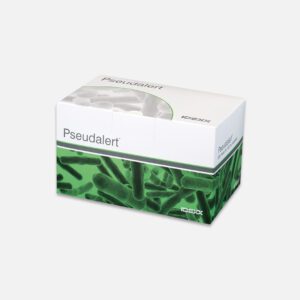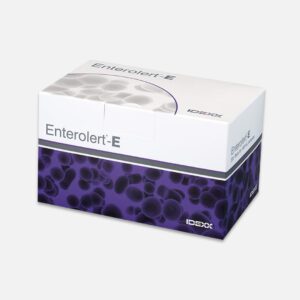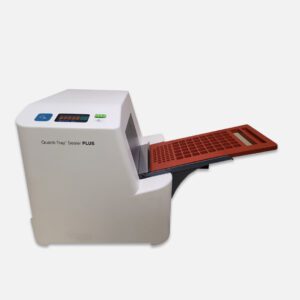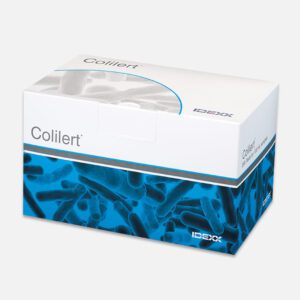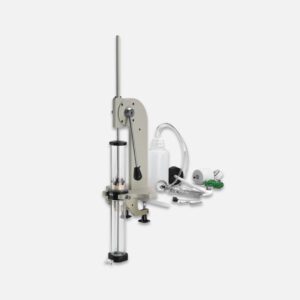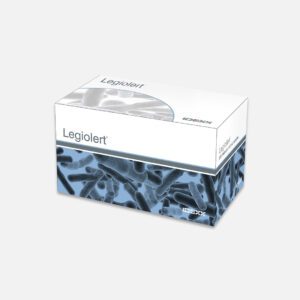Description
Overview
Easy
- No media preparation.
- No autoclaving.
- No colony counting.
- No glassware cleaning.
Rapid
- Less than 1 minute of hands-on time.
- Results in 24 hours rather than 48 to 72 hours.
Accurate
- Sensitive to 1 enterococci per 100 mL.
- Enumerates up to 2,419 enterococci per 100 mL without dilutions (with Quanti-Tray/2000).
- Less subjective interpretation.
- 50% fewer false positives and 95% fewer false negatives than the standard membrane filtration (MF) method.1
Economical
- Up to 12-month shelf life minimizes waste.
- 24-hour test saves incubator space.
Science
How the Enterolert Test works
The Enterolert Test uses a proprietary Defined Substrate Technology (DST) nutrient indicator to detect enterococci. This nutrient indicator fluoresces when metabolized by enterococci. DST improves accuracy and avoids the need for hazardous sodium azide suppressants used in traditional media.
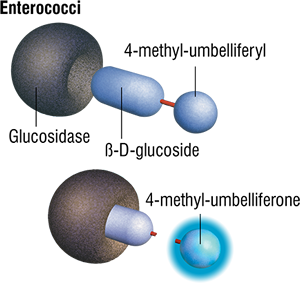
How to use
Quantification
Step 1
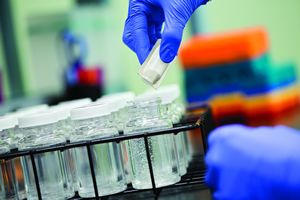 Add reagent to sample.
Add reagent to sample.
Step 2
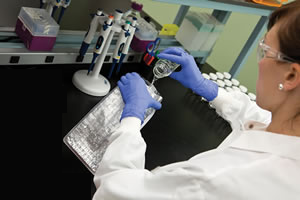 Pour into Quanti-Tray (counts from 1–200) or Quanti-Tray/2000 (counts from 1–2,419).
Pour into Quanti-Tray (counts from 1–200) or Quanti-Tray/2000 (counts from 1–2,419).
Step 3
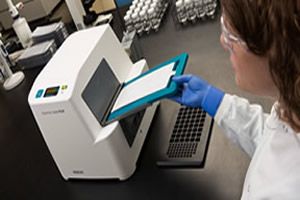 Seal using Quanti-Tray Sealer and incubate for 24 hours at 41°C ± 0.5°C.
Seal using Quanti-Tray Sealer and incubate for 24 hours at 41°C ± 0.5°C.
Step 4: Quanti-Tray
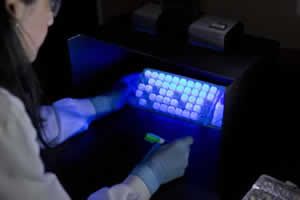 For counts from 1–200: Count fluorescent wells and refer to most probable number (MPN) table.
For counts from 1–200: Count fluorescent wells and refer to most probable number (MPN) table.
Step 4: Quanti-Tray/2000
 For counts from 1–2,419: Count fluorescent wells and refer to most probable number (MPN) table.
For counts from 1–2,419: Count fluorescent wells and refer to most probable number (MPN) table.
Frequently asked questions
Is the Enterolert Test U.S. EPA-approved?
Yes, the Enterolert Test is U.S. Environmental Protection Agency (EPA)-approved as a method for enterococci detection in following types of water:
- Ambient waters—includes fresh, marine, or estuarine surface water used for recreation, propagation of fish, shellfish, or wildlife; agriculture; industry; navigation; or as source water for drinking water facilities
- Ground water
- Wastewater
What species of enterococci can the Enterolert Test detect?
Some species of enterococci that Enterolert Test detects are: faecalis, faecium, avium, gallinarum, casseliflavis, and durans.
What is the detection limit of the Enterolert Test ?
Enterolert Test detects enterococci at 1 organism/100 mL.
What is the shelf life of the Enterolert Test ?
The shelf life of the Enterolert Test is up to 12 months from the date of manufacture.
What are the recommended storage conditions for the Enterolert Test?
Store at 2–30°C away from light.
What color and consistency should the the Enterolert reagent powder be?
The Enterolert reagent powder should be tan in color; it should be dry and free-flowing. Any concerns about the color or integrity of the powder should be directed to IDEXX Technical Services.
Can I quantify my Enterolert Test results?
Yes, the Enterolert Test can be run with Quanti-Tray, Quanti-Tray/2000 or any multiple-tube format.
Is there a comparator for the Enterolert Test ?
There is no comparator for the Enterolert Test. For comparison, use a negative control when interpreting results.
What are the disposal requirements for an Enterolert Test sample?
Check with your local, state, and/or federal authorities for proper disposal of bacteriological biohazard materials at your facility.


